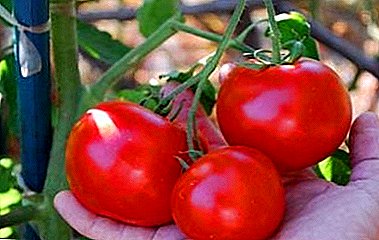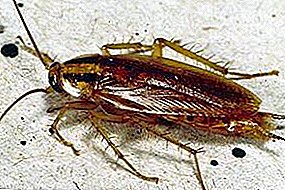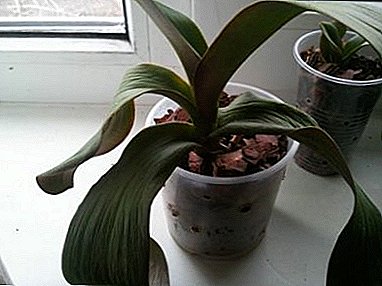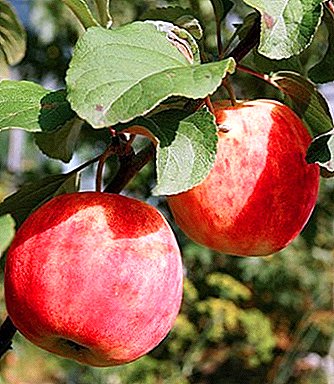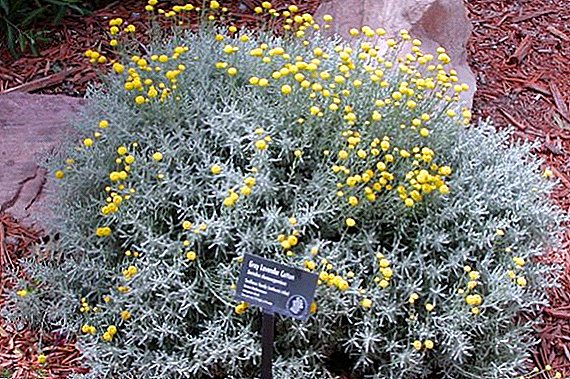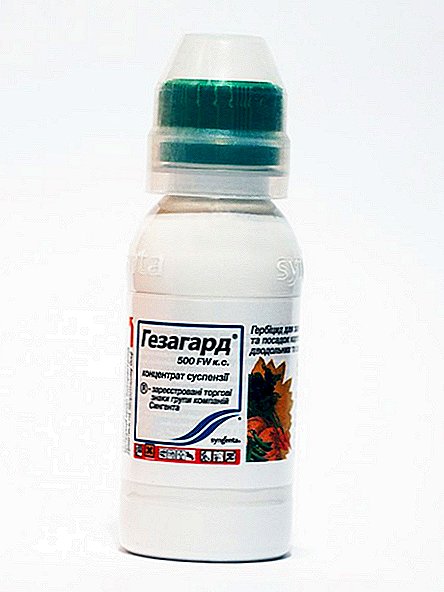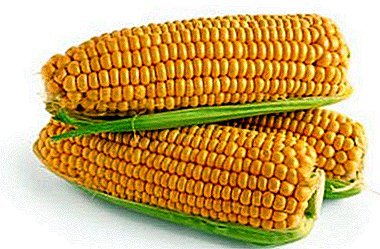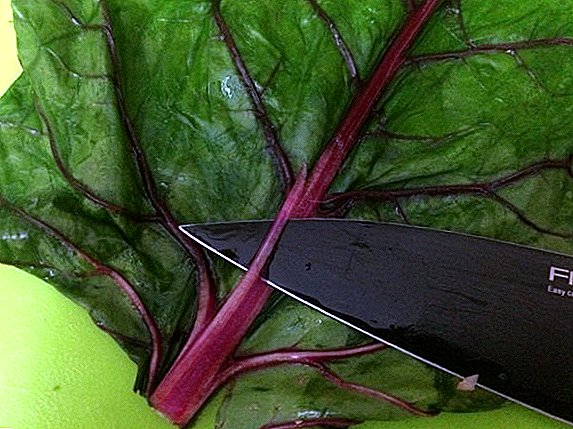 Chard (more common name - leaf beet) is more vegetable than greens, but at the same time, unlike ordinary beets, we eat its ground portion, and not the roots, which are absolutely unsuitable for food. Distinguish petiole and leaf beet.
Chard (more common name - leaf beet) is more vegetable than greens, but at the same time, unlike ordinary beets, we eat its ground portion, and not the roots, which are absolutely unsuitable for food. Distinguish petiole and leaf beet.
The leaf form may have a different color: light green, silver, yellow, pink, purple, raspberry and even whitish. They eat not only the fleshy chard of the chard, but also its luxurious juicy leaves.
Did you know? Even our ancestors ate the petioles and leaves of leaf beets. The ancient Romans were the first to appreciate the high taste qualities and beneficial properties of chard, which gave it the name "Roman cabbage".Leaf chard is cultivated solely for the sake of leaves that resemble spinach in taste. After cutting, the plant quickly grows new leaves, which allows for a season to get several harvests.
Chard: chemical composition of leaf beets
 Just imagine, 93% of chard is made up of water, while only 7% of the total weight of the plant went to the proportion of solids.
Just imagine, 93% of chard is made up of water, while only 7% of the total weight of the plant went to the proportion of solids.
But even this meager amount turned out to be quite enough to give it unique healing properties.
The organic compounds present in the beetroot are represented by proteins, fats and carbohydrates contained in the plant in a ratio of 1.8; 0.2 and 2.1 milligrams. In addition, the leaves are rich in ash, dietary fiber, fatty acids, polyphenols, mono - and disaccharides.
Important! When using chard, you must observe moderation. Sheet beets contain large amounts of vitamin K, the excessive consumption of which leads to blood viscosity, which can cause the formation of blood clots and cause an increase in migraine attacks.Mangold has a funny calorie content: 100 grams of the product contains only 19 kcal, which turns it into the best product for a dietary diet. Daily consumption of chard will not only help to lose extra pounds, but also significantly improve health.
Did you know? Of particular value is the nitrogenous compound contained in the leaves of chard, betaine, which promotes the breakdown and better assimilation of plant and animal proteins. It is also a building material for the formation of a physiologically active lipotropic substance - hopin, which activates the work of liver cells and prevents the development of atherosclerotic changes in blood vessels. In addition, hopin inhibits the development of malignant cells.
 Sheet beets in terms of vitamin-mineral complex - a real find. Chard has a high nutritional value, but low calorie. It contains an impressive amount of micro and macro elements, such as potassium, phosphorus, sodium, magnesium, iron, zinc and calcium.
Sheet beets in terms of vitamin-mineral complex - a real find. Chard has a high nutritional value, but low calorie. It contains an impressive amount of micro and macro elements, such as potassium, phosphorus, sodium, magnesium, iron, zinc and calcium.
In addition, its leaves contain B vitamins, as well as beta-carotene, ascorbic acid, niacin, phylloquinone, selenium, copper and manganese.
Useful properties of chard
The healing properties of leaf beets have been described in detail by ancient healers. Broth chard advised to rinse your hair with dandruff, and to stimulate hair growth a slurry from its root to apply to places of baldness. In addition, the juice of the plant is recommended to use for those who suffer from chronic constipation, as it perfectly stimulates the bowels.
Daily intake of leaf beets will bring enormous benefits to the body and will help reduce sugar, normalize blood pressure in hypertension, improve the cardiovascular, lymphatic and immune systems, stimulate the liver and kidneys. The substances contained in the leaves of this plant have high antioxidant and regenerating properties, which makes it possible to actively use this unique plant in cosmetology.
The use of leaf beets
 Due to the high therapeutic potential and high taste characteristics, chard has found its wide application in cosmetology, traditional medicine and cooking. From leaf beet cook brothsthat are used to treat boils, burns and frostbite.
Due to the high therapeutic potential and high taste characteristics, chard has found its wide application in cosmetology, traditional medicine and cooking. From leaf beet cook brothsthat are used to treat boils, burns and frostbite.
Gruel of leaves applied to the eyes to relieve inflammation of the conjunctiva, due to the content in the plant zeaxanthin and lutein - substances that prevent the development of cataracts and macular degeneration. Fresh juice - An effective remedy for toothache, warts, age spots and freckles.
Did you know? Ancient doctors often used chard as part of various medicinal recipes. For example, Hippocrates believed that this plant helps to get rid of fever and skin diseases, and Paracelsus used it to treat blood diseases and increased bleeding.In cooking, the leaves and scapes of chard are used to make salads, cabbage rolls, beetroot soup and vinaigrettes. In Italy, a lot of national dishes are cooked from leaf beets. The French claim that the chard stalks taste like asparagus beans, and its leaves - spinach. Nutritionists advise eating chard salad, as even short storage leads to a decrease in its beneficial properties.
The simplest, but at the same time, a delicious dish of leaf beets is considered salad of chard and green onions. For its preparation it is necessary to chop the leaves of chard and green onions and fill them with sour cream.
 With caution, the plant should be used by those who suffer from diseases of the digestive system, as it contains a large number of harmful volatile substances.
With caution, the plant should be used by those who suffer from diseases of the digestive system, as it contains a large number of harmful volatile substances.
Excessive intake of its juice can harm the body, since the abuse of chard can cause dyspeptic disorders, drowsiness and slow pulse.
How to use chard in traditional medicine
Since ancient times, mangold has been used in traditional medicine, its benefits to the body are more than obvious, but its uncontrolled use may also be harmful to health. Fresh leaves of leaf beets - an excellent remedy for migraine. A decoction of the leaves and petioles of chard is used to treat diseases of the respiratory system and tonsillitis.
Juice plants have long stopped bleeding. First, the wound was tightly bandaged, then it was poured over with fresh juice of leaf beets. The plant contains an impressive amount of iron, potassium, phosphorus, calcium, so that a decoction of it will be useful for anemia, vitamin deficiency, treatment of bone fractures and tumors.
Chard is also very often used when it is necessary to get rid of insomnia, neurasthenia, or increased excitability of the nervous system.
Important! Due to the fact that the chard contains an impressive amount of oxalic acid, which tends to crystallize, its use is better to refuse to those who suffer from diseases of the kidneys and gall bladder.
 Chard will gladly reveal to you all its useful properties, you need to know only the correct recipes for the preparation of therapeutic drugs. Sheet beets can be used as an anti-inflammatory, diuretic and wound healing agent.
Chard will gladly reveal to you all its useful properties, you need to know only the correct recipes for the preparation of therapeutic drugs. Sheet beets can be used as an anti-inflammatory, diuretic and wound healing agent.For these purposes, apply decoction of the leaves of the plant. To prepare it, you need to pour two tablespoons of crushed beet leaves with two cups of boiling water, boil for 10 minutes in a water bath and use as compresses or for ingestion.
However, in most cases, treatment with chard comes down to eating the plant as part of salads or its freshly squeezed juice.
Cooked beetroot
In cooking, chard is used in the preparation of salads. Pleasant taste and high nutritional value of the plant brought him incredible popularity. Most of its leaf beet dishes are easy to prepare.
Eat young leaves and petioles of the plant. Low calorie content allows you to use chard as the basis for the preparation of many dietary dishes. Here are some recipes for delicious chard diet, cooking which does not take much time.
Cold soup
 You need to take 500 grams of young leaves of leaf beets, boil them in a glass of water and drain in a colander. To the leaves add two finely chopped fresh cucumbers, two hard-boiled chopped eggs, green onions, dill and parsley.
You need to take 500 grams of young leaves of leaf beets, boil them in a glass of water and drain in a colander. To the leaves add two finely chopped fresh cucumbers, two hard-boiled chopped eggs, green onions, dill and parsley.
Mix all the ingredients and season with two tablespoons of sour cream, add chilled leaf decoction and 750 grams of bread kvass.
Stir-fry chard stalks.
 Petioles separated from the leaf plate and boil for 2-3 minutes over low heat. Throw in a colander and let drain water, then dry and fry in any vegetable oil. Serve with sour cream.
Petioles separated from the leaf plate and boil for 2-3 minutes over low heat. Throw in a colander and let drain water, then dry and fry in any vegetable oil. Serve with sour cream.
The use of chard for cosmetic purposes
Mangold is a tasty and healthy plant. Its leaves are also used in cosmetology, they perfectly nourish, moisturize, cleanse and rejuvenate the skin. In addition, leaf beets are the main ingredient in many hair care programs. It stimulates their growth, strengthens the roots, and besides, it makes them shine and relieves dandruff.
Below you will find some of the most popular cosmetic recipes using chard.
Moisturizing face mask.
Thoroughly washed chard leaves should be doused with boiling water, cooled a little, put on a cleansed face, cover with several layers of gauze and leave for 20 minutes. After removing the mask, apply any nourishing cream.
Vitamin mask.
The crushed leaves of the plant should be poured with a small amount of boiling water, add a teaspoon of honey and a few drops of lemon juice, place the leaves between the layers of gauze and apply on face. Keep the mask should be from 15 to 20 minutes, then rinse your face with warm clean water and rub with an ice cube.
Mask to stimulate hair growth.
Rubbing into the scalp 30 minutes before washing the freshly squeezed chard juice will make the hair more lush and healthy. 
Contraindications to the use of chard (leaf beet)
Mangold, despite all its useful properties and high nutritional value, has some contraindications, which causes its use to be treated with caution to those who suffer from gallstone or urolithiasis, since an increased content of oxalic acid may cause an exacerbation of the disease.
In addition, with caution in eating leaf beets should be those who suffer from thrombophlebitis, varicose veins or increased blood clotting. Beta-carotene contained in the leaves of the plant, increases blood viscosity, which can have extremely undesirable effects.
Also, care should be taken to the use of chard for those who are prone to the development of allergic reactions or suffer from his individual intolerance.
 Mangold is a modest plant, in the leaves of which lies a powerful healing potential.
Mangold is a modest plant, in the leaves of which lies a powerful healing potential.
If you want to preserve health, youth and beauty for a long time, then you can’t do anything without eating leaf beets.


